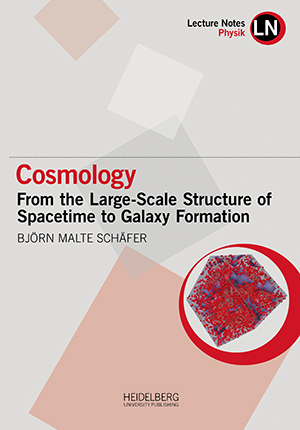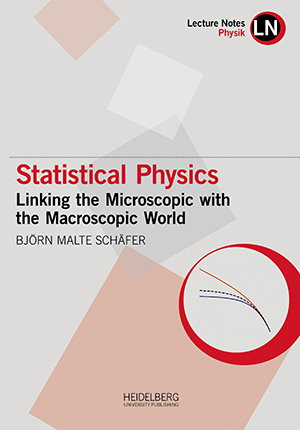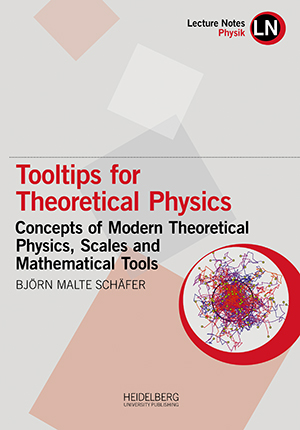Schäfer, Björn Malte
General Relativity: Geometric Structure and Dynamics of Spacetime
General relativity is the theory of the structure and dynamics of spacetime. These lecture notes provide an introduction into the concepts of differential geometry, in particular pseudo-Riemannian geometry, and discusses the ideas behind the construction of a gravitational field equation. Exact solutions to the field equation for highly symmetric spacetimes, i.e. black holes, FLRW cosmologies and gravitational waves, are worked out. Advanced topics that are covered include Lie derivatives and the Killing equation, the derivation of the field equations from variational principles, and the formulation of field theories on curved spacetimes.
Cosmology: From the Large-Scale Structure of Spacetime to Galaxy Formation
The lecture notes give an overview of modern cosmology: After introducing the necessary concepts from general relativity, the FLRW-class of cosmological models is discussed, with emphasis on dark energy. Cosmic structure formation, the necessity of dark matter and the interplay between statistics and nonlinear fluid mechanics are treated in detail. The physics behind cosmological observations that have led to the standard model of cosmology is explained, in particular supernovae, the cosmic microwave background and gravitational lensing.
Statistical Physics: Linking the Microscopic with the Macroscopic World
Statistical physics provides the microscopic theory for thermodynamic macroscopic properties of a physical system. These lecture notes introduce the necessary concepts of statistics and analytical mechanics for equilibrium thermodynamics with partition functions. They cover classical and quantum statistics, and treat advanced topics such as Langevin dynamics, the Fokker-Planck equation and phase transitions. Many systems like ideal classical and relativistic gases are worked out in detail.
Tooltips for Theoretical Physics: Concepts of Modern Theoretical Physics, Scales and Mathematical Tools
Theoretical physics is commonly taught in separate lectures, illustrating the physics behind the great constants of Nature: Electrodynamics and the speed of light, quantum mechanics and Planck’s constant, thermodynamics and Boltzmann’s constant, and finally relativity with Newton’s constant as well as the cosmological constant. In these lecture notes, the concepts of theoretical physics are illustrated with their commonalities, and phenomena are traced back to their origin in fundamental concepts.







